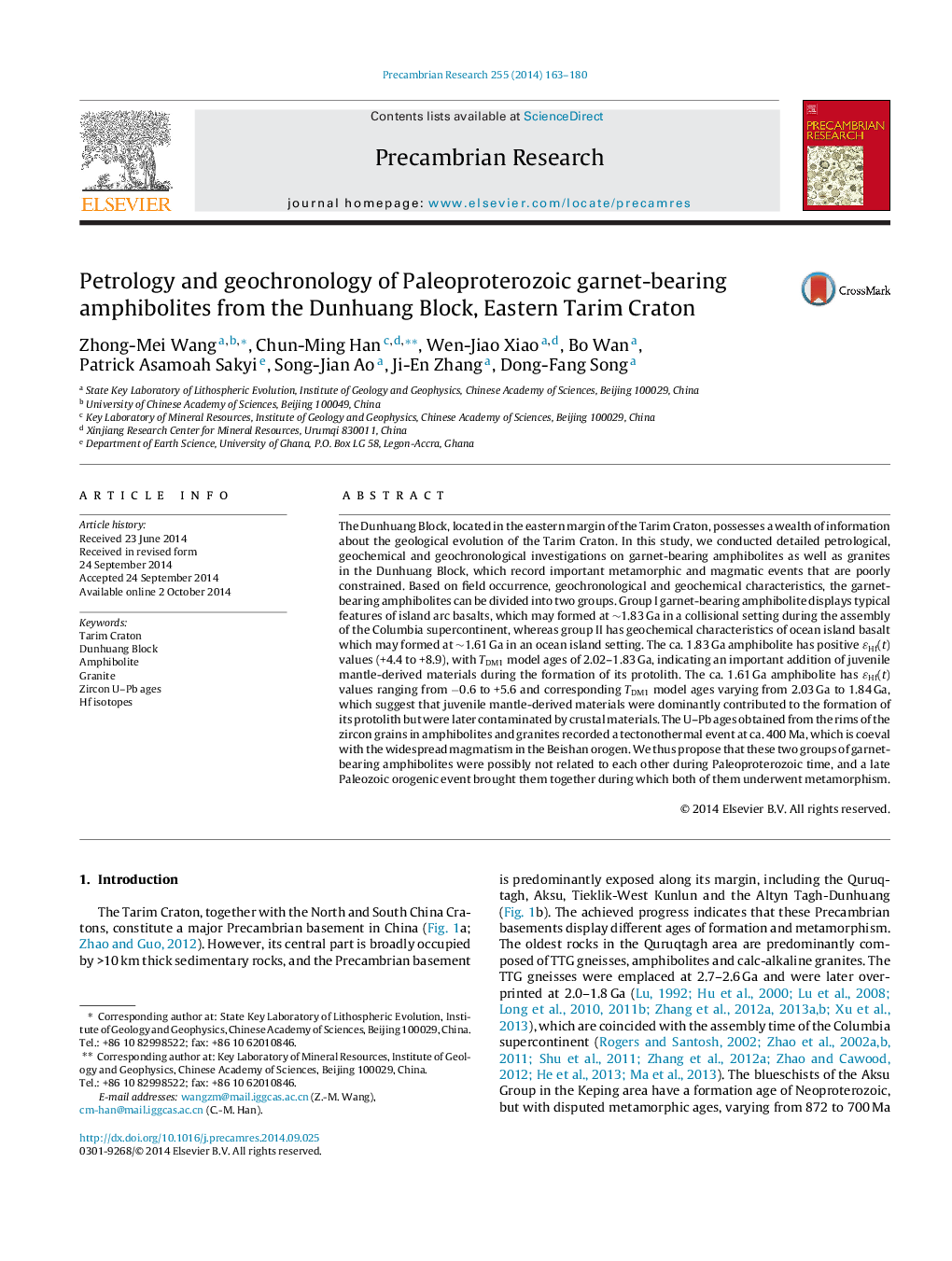| Article ID | Journal | Published Year | Pages | File Type |
|---|---|---|---|---|
| 4722782 | Precambrian Research | 2014 | 18 Pages |
•The 1.61 Ga lenticular garnet-bearing amphibolites have OIB characteristics.•The 1.83 Ga garnet-bearing amphibolites possess the features of IAB.•Zircon Hf isotopes suggest an enriched mantle source.•A ∼400 Ma metamorphic event may occur in the eastern Tarim Craton.
The Dunhuang Block, located in the eastern margin of the Tarim Craton, possesses a wealth of information about the geological evolution of the Tarim Craton. In this study, we conducted detailed petrological, geochemical and geochronological investigations on garnet-bearing amphibolites as well as granites in the Dunhuang Block, which record important metamorphic and magmatic events that are poorly constrained. Based on field occurrence, geochronological and geochemical characteristics, the garnet-bearing amphibolites can be divided into two groups. Group I garnet-bearing amphibolite displays typical features of island arc basalts, which may formed at ∼1.83 Ga in a collisional setting during the assembly of the Columbia supercontinent, whereas group II has geochemical characteristics of ocean island basalt which may formed at ∼1.61 Ga in an ocean island setting. The ca. 1.83 Ga amphibolite has positive ɛHf(t) values (+4.4 to +8.9), with TDM1 model ages of 2.02–1.83 Ga, indicating an important addition of juvenile mantle-derived materials during the formation of its protolith. The ca. 1.61 Ga amphibolite has ɛHf(t) values ranging from −0.6 to +5.6 and corresponding TDM1 model ages varying from 2.03 Ga to 1.84 Ga, which suggest that juvenile mantle-derived materials were dominantly contributed to the formation of its protolith but were later contaminated by crustal materials. The U–Pb ages obtained from the rims of the zircon grains in amphibolites and granites recorded a tectonothermal event at ca. 400 Ma, which is coeval with the widespread magmatism in the Beishan orogen. We thus propose that these two groups of garnet-bearing amphibolites were possibly not related to each other during Paleoproterozoic time, and a late Paleozoic orogenic event brought them together during which both of them underwent metamorphism.
